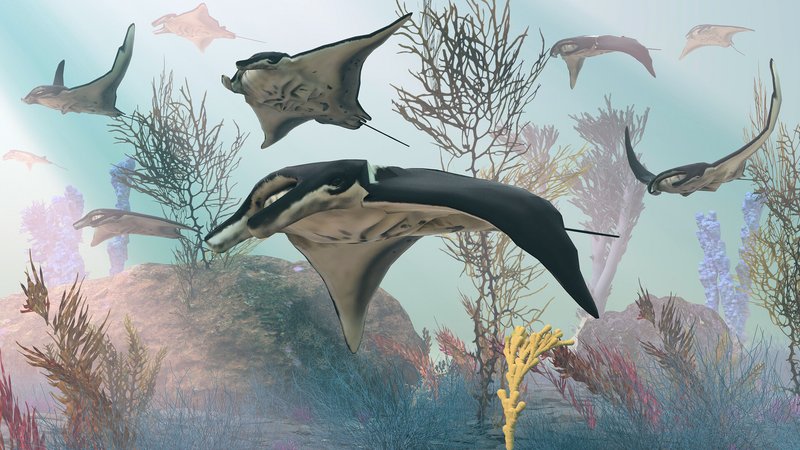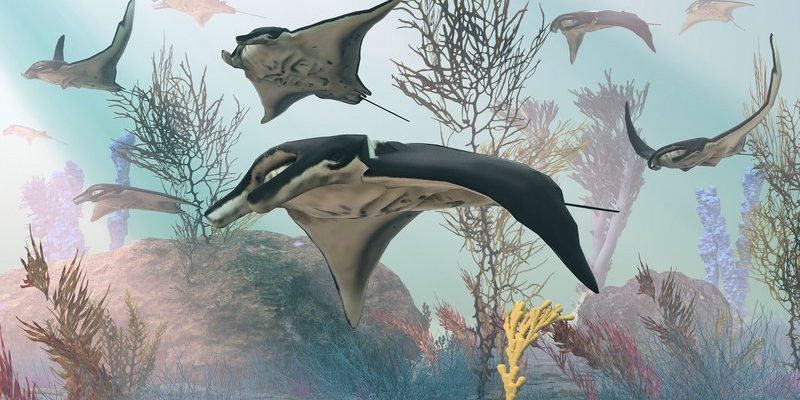
Manta rays belong to the family Mobulidae and are often referred to as “devil rays” due to their unique appearance with wide wings and a large, flat body. Over time, they’ve adapted beautifully to their underwater environments, thriving in warm seas around the globe. Their story is like a complex tapestry woven through time, showcasing how these creatures have evolved to become the magnificent beings we see today. Let’s dive deeper into their evolutionary journey and explore how they’ve changed over the ages.
The Origins of Manta Rays
Manta rays have a rich evolutionary history that dates back over 200 million years. They are part of a group called elasmobranchs, which includes sharks and skates. What’s fascinating here is that they share a common ancestor with these creatures. Think of it as an ancient family tree where manta rays branched out to carve their own path through evolution.
The earliest ancestors of manta rays were much smaller and resembled their shark relatives more closely. Over time, as they adapted to their environments, they began to develop their distinct characteristics—like their wing-like pectoral fins. These fins are not just for show; they enable the manta ray to glide through the water with grace, almost like flying. You might be wondering why this adaptation was important. Well, their size and wing shape help them efficiently catch small food particles while swimming, making them highly effective filter feeders.
Interestingly, the fossil record shows us how manta rays evolved from their ancestors. Early forms were quite different in size and shape, but as the oceans changed and diversified, so did the manta ray. They transformed from small, shark-like fish into the large, flat creatures we know today. This evolutionary path illustrates how they’ve navigated challenges in their environment, adapting to thrive in various habitats.
If you’ve ever seen a manta ray, you know they are breathtaking. These creatures can grow up to 23 feet across, and their wings can span even wider than a small car! Their flat bodies and large pectoral fins create a striking silhouette against the blue of the ocean. But their appearance isn’t just for aesthetics; it plays a crucial role in their survival.
Manta rays come in two species: the giant manta ray and the reef manta ray, each with unique features. The giant manta ray is the larger of the two, found in open waters, while the reef manta ray prefers the coastal areas. Both species have evolved to develop these traits that suit their respective environments. Their bodies are specially designed to glide gracefully through the water, helping them avoid predators while efficiently feeding on plankton.
Their coloration, usually dark on top and lighter underneath, serves as a form of camouflage. This pattern helps them blend into the ocean floor from above and the lighter surface from below. It’s like nature’s way of ensuring they stay safe while looking fabulous!
The Role of Manta Rays in Marine Ecosystems
Manta rays aren’t just beautiful; they play a vital role in their ecosystems. As filter feeders, they help maintain a healthy balance in the ocean by consuming vast amounts of plankton. Imagine them as nature’s vacuum cleaners, helping to keep the water clean and clear. This feeding habit not only aids their survival but also supports other marine life by ensuring a rich diversity of species in their habitat.
Their presence attracts various marine creatures, including smaller fish that seek shelter around them. This relationship is known as commensalism, where one species benefits without harming the other. Manta rays become like underwater parks, providing safe havens for smaller fish and contributing to the vibrancy of coral reefs.
Furthermore, by targeting certain species of plankton, manta rays help regulate their populations. Their feeding habits contribute to the overall health of marine ecosystems, making them a key player in the balance of ocean life. Without them, we could see a rise in plankton populations, which might affect other marine species and even lead to algal blooms.
Challenges and Conservation Efforts
Despite their impressive adaptations and essential roles, manta rays face significant threats today. Overfishing, habitat destruction, and climate change are just a few challenges that put pressure on their populations. It’s hard to imagine that these majestic creatures are vulnerable, but their journey through evolution is now at risk.
In many regions, manta rays are hunted for their gills, which are considered a delicacy in some cultures. This demand has led to a decline in their numbers, sparking conservation efforts worldwide. Groups are working hard to raise awareness about the importance of protecting these creatures and their habitats. Organizations are also advocating for sustainable fishing practices and marine protected areas, which help shield manta rays from harmful activities.
Honestly, seeing these magnificent animals in their natural habitats is a once-in-a-lifetime experience. It’s essential for us to understand their plight and take action to protect them. Through education and community engagement, we can all play a part in ensuring that future generations witness the beauty of manta rays in our oceans.
The Future of Manta Rays
Looking ahead, the future of manta rays depends on our collective actions. As we become more aware of their ecological importance, there’s hope for their populations to recover. Ongoing research continues to shed light on their behaviors, migration patterns, and breeding habits, which helps inform conservation strategies.
Moreover, advancements in technology are aiding researchers in tracking manta rays more effectively. Scientists are using satellite tags to monitor their movements, gather data on their feeding habits, and learn more about their migratory routes. This information is invaluable for developing targeted conservation efforts.
As stewards of the ocean, we can contribute to the future of manta rays by supporting sustainable practices and advocating for policies that protect marine environments. Whether it’s reducing plastic use or promoting ocean-friendly tourism, every little action helps.
In conclusion, the evolutionary journey of the manta ray is a remarkable tale of adaptation and survival. These creatures are not only beautiful but also play critical roles in our marine ecosystems. By understanding their story and taking steps to protect them, we can ensure that manta rays continue to glide gracefully through our oceans for generations to come.

